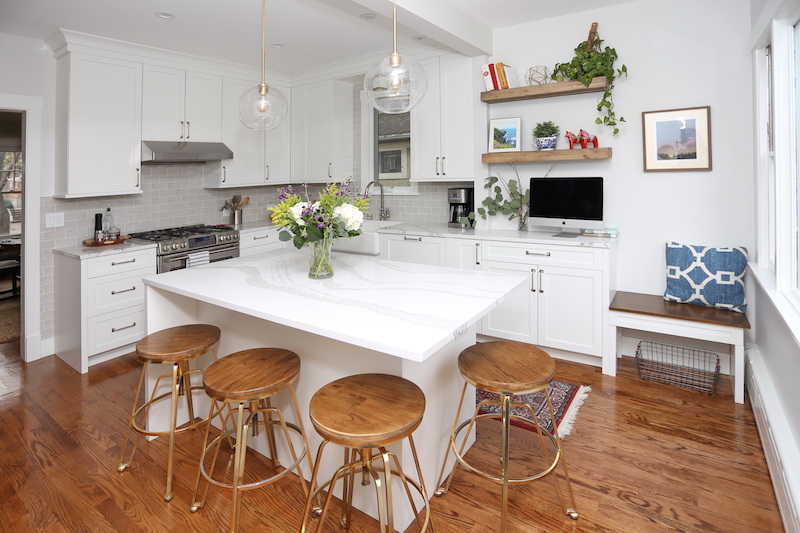Ask the Expert: Which Cabinet Construction Is Best?
When you are remodeling or designing your new kitchen, you may have several questions as you work your way through the process. Seigle’s designers are experts and would love to help you out! In this series, we take your excellent questions, and our skilled team members provide answers based on their years of experience.
Today we wanted to talk about a very important question about cabinet material: What’s the difference between cabinet materials? Seigle’s designer and sales consultant Patty Steele answers the question below.

——————————
Q. I’ve started to investigate cabinet materials and am not sure which to choose: Furniture Board (Standard) or APC (All Plywood Construction). What are the differences, pros, and cons?
 A. Cabinetry is generally built with two different construction levels: furniture board (Standard), or all-plywood-construction (APC). There are pros and cons to both options. Both can make for gorgeous, dependable, long-lasting kitchens.
A. Cabinetry is generally built with two different construction levels: furniture board (Standard), or all-plywood-construction (APC). There are pros and cons to both options. Both can make for gorgeous, dependable, long-lasting kitchens.
When “Standard” and “APC” come up, we are referring to the materials used to create the box of the cabinet: the sides, back, and bottom. It can also determine the interior shelving material and thickness. The types of materials used to construct a cabinet can vary by manufacturer, and by lines within that manufacturer. It’s important to review all structural characteristics before purchase.
Both Furniture board and All Plywood cabinetry have their pluses and minuses. It’s important to note that both are well suited to hold heavy granite and quartz tops. Once those tops are on, the construction difference is virtually unnoticeable to the naked eye.
All Plywood Construction (APC)
APC is constructed with plywood sides and a plywood bottom, ranging from 3/8” to 3/4” thick, depending on the manufacturer’s specifications.
Pros:
- Plywood is generally more stable and sturdier than furniture board.
- It tends to better hold joining hardware and glue, to provide more solid joints where pieces are put together.
- Plywood cabinetry will likely include thicker interior shelves, providing more support for heavier items.
Cons:
- It can be a pricey upgrade from its furniture board competition, with an overall price increase of 7-15 percent depending on the line of cabinets chosen.
- Because it is wood, it is more prone to expansion and contraction, and therefore warping, in high-moisture, high-heat areas, causing cabinets to move out-of-square.
Furniture Board (Standard)
Furniture Board is an industry reference for an industrial grade of particle board, specifically manufactured for cabinetry construction.
Pros:
- Furniture Board cabinets are generally less costly and more common.
- The overall construction of furniture board cabinetry is reliable and strong, and because of the adhesive content, is less likely to warp with normal moisture or heat.
Cons:
- Furniture board cabinetry tends to have thinner sides and bottoms, and shelves tend to be thinner, but they typically perform well for this purpose. Often consumers equate this product to the inexpensive particle board found in warehouse homecenters. Furniture board is much denser providing superior structural performance and resistance to humidity.
In the end, deciding between cabinet construction options may come down to price and often personal preference. No matter what the final decision, we look forward to helping you design the kitchen of your dreams.
———————————————
Thank you, Patty, for the helpful response!
Interested in getting started on your kitchen remodel? Make an appointment at your nearest Seigle’s today!
Sign Up For Our Elist
Make An Appointment
Show Room Tours
Latest Seigle's News »
Meet the Seigle’s Team: David Garcia
At Seigle’s, our team of expert designers will take you through your p...
Read More




